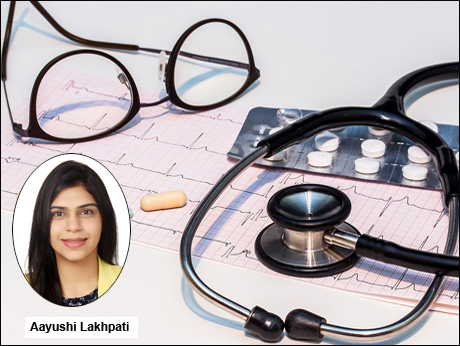
By Aayushi Lakhapati, Co-Founder and Chief Health Officer of 23BMI, a healthcare venture focusing on curing obesity and related concerns.
March 6 2020: The Indian healthcare industry today is not what it was just five years ago. This is largely due to technology and a large number of innovative digital solutions that are introduced every day. Technology, without a doubt, has been a key enabler of growth for different sectors / industries globally; it has certainly changed the entire landscape of Indian healthcare industry. Advancements in technological developments over past few years have led to incredible growth in the Indian healthcare space from innovation perspective. New age technologies such as VR (virtual reality), AI (artificial intelligence, 3D-printing, robotics, nanotechnology etc. have led to what was visualized as future of healthcare industry. Here are my top 7 picks on how technology has led to a major transformation of Indian Healthcare sector!
IoT / IoMT
Internet of Things / Internet of Medical Things is an interconnected devices used for medical purpose for better and more accurate management of healthcare. Use of IoMT is helping healthcare providers to conduct advanced diagnostics which were never possible before the technology evolved, lower the costs of procedures, enable predictive / preventive treatments, identify health trends etc. Wearable devices too have contributed to the growth of IoMT and related services.
Data Management
Healthcare industry generates huge amount of data of patients daily across the world related to health profiles, health conditions, concerns, medications, treatments etc. One of the major challenges faced by the healthcare industry was to build a robust infrastructure to store, process and access this data. Developments in technology have made it possible. Now, we can digitize and store health records and access the same anywhere from the world using cloud computing and storage. This enables people today to seek consultation / treatment globally with a complete medical history reducing duplication of procedures / medications enabling better and efficient treatment.
VR / AR
Virtual reality & Artificial Intelligence can improve patient experience, which hardly is mentioned as a concern by enabling the patients to understand the scenarios with more clarity, communication and understanding. VR / AR surgeries can now enable the doctors to forecast the medical scenarios, try and test them before actually going ahead with the same. It also has played an important role in medical education / building simulations.
Mobile Health
Smart phones and tablets have led to a revolution in the health and wellness sector. It is now possible to look for relevant doctor around you, understand their ratings based on user experience, book an appointment using mobile devices enabled with Internet. Mobile Apps can now understand your exercise patterns, send reminders to achieve fitness goals, motivate etc. Mobile apps are capable of analyzing health profile, medical conditions and suggest suitable custom diets based on preference. They are also extensive used to order medicines, schedule recurring medicine orders making life a lot simpler and convenient.
5G Technology
5G Technology could save your trip to your doctor who is based miles away. Doctors would be able to assess patient’s medical data and provide personalized treatment visually using 5G enhanced broadband hyper connectivity.
3D Printing
3-D printers have quickly become one of the hottest technologies on the market. These printers can be used to create implants and even joints to be used during surgery. 3-D-printed prosthetics are getting increasingly popular for their precision. 3-D printing can be used to ‘print’ pills that contain multiple drugs, which will help patients with the organization, timing and monitoring of multiple medications
Robotic Surgeries
Robotic surgery is used in minimally invasive procedures and helps to aid in precision, control and flexibility. During robotic surgery, surgeons can perform very complex procedures that are otherwise either highly difficult or impossible. As the technology improves, it can be combined with augmented reality to allow surgeons to view important additional information about the patient in real time while still operating
Moreover, the Indian medical tourism market is growing at the rate of 18 per cent year on year and is expected to reach US$ 9 billion by 2020. There is a significant scope for enhancing healthcare services considering that healthcare spending as a percentage of Gross Domestic Product (GDP) is rising (ref).
Perhaps now more than any other time in our history, we are realizing the importance of technology in social service delivery, and its role in enhancing the general quality of life.
I believe that if planned and implemented well, technological progress can make a significant contribution to India’s healthcare needs.